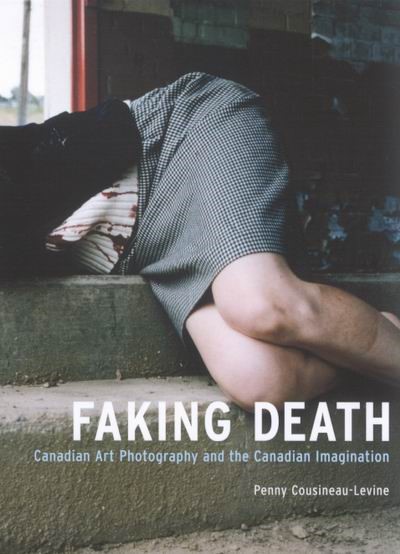In: Canadian art history

Philip Monk | Is Toronto Burning?: Three Years in the Making (and Unmaking) of the Toronto Art Community
July 7, 2022Philip Monk, Is Toronto Burning?: Three Years in the Making (and Unmaking) of the Toronto Art Scene, London: Black Dog Publishing, 2016.
Jack Pollock, Dear M: Letters from a Gentleman of Excess, McClelland & Stewart, 1989
“Each day I write. I’m not sure what it’s all about, but most days I write about art and the constant raping of its values by pseudo intellectual acrobats.” (Jack Pollock, Dear M: Letters from a Gentleman of Excess)
Nothing seems more improbable than what people believed when this belief has gone with the wind. (Doris Lessing, The Golden Notebook)
“Culture has replaced brutality as a means of maintaining the status quo.” (Philip Monk, Is Toronto Burning? Three Years in the Making (and Unmaking) of the Toronto Art Scene)
A spate of old issues of FILE magazine came into my hands over the past year (it’s worth noting that they were a gift from Elizabeth Chitty, who also gave me the copy of Monk’s book that spurred this essay). They’re a bit ragged, but that seems appropriate, as they’re like flashbacks (the magazine began publishing in 1972 and ran for 17 years, with 26 issues) that don’t resonate with many, more nostalgia than substance.
They seem very dated, at times very juvenile, and more of an exercise in artistic onanism than anything else. This is, of course, a generalization, and it’s broken in certain points quite clearly. The issue that is almost entirely colour images of the three poodles, one of the many symbolic personas of General Idea, engaged in various tumbling and enthusiastic sex acts is one to keep (as I was impressed when I saw one of the large paintings from this series on a trip to the Art Gallery of Hamilton, installed amidst other notable Canadian works from Graham Coughtry to Attila Lukacs).
But many of the other copies of FILE are easily dismissed, even by someone like myself who has made a career of excavating in spaces that are too often ignored as pertains to Canadian Art history. The odd flash of brilliance, or the appropriation of mainstream media narratives and iconography, the sampling of authors from Burroughs to Acker, are the exception, not the rule.
Perhaps, this many decades later, our expectations of how artists engage in appropriation is more sophisticated – or more jaded. Edit as you will.
But all this reminded me of my long overdue response to Philip Monk’s book Is Toronto Burning? Three Years in the Making (and Unmaking) of the Toronto Art Scene), published several years ago, and that is focused upon the same era. I found the book uneven, and some players and characters in this story seem somewhat incongruous to their later roles or personas (true or assigned, in that vague way of art history and cultural narratives). But Monk’s own words lead to this: “In a sense, what follows is a story, a story with a cast of characters. These characters are pictured in video, photography, and print – not necessarily as portraits but rather as performers.” (from the chapter 1977). But in finally offering my impression of Monk’s narrative (considering personal and public factors and all the sites where those contested narratives collude and collide), I’ll begin with the following assertion: “All narrators are unreliable. Especially when they are characters within their own story.”
Read more here.
Read More
Faking Death
July 24, 2021Penny Cousineau-Levine
Faking Death
Canadian Art Photography and the Canadian Imagination
McGill-Queen’s University Press
Penny Cousineau-Levine’s “Faking Death” is considered by many to come closest to defining the characteristics of “Canadian” art; specifically the photographic arts but her conclusions can be applied to visual, performing and literary arts as well. She posits that the photographs she used for her study (all artistic photos by a select group of artists taken between 1950 and the 1990’s) are rarely about the referent… as she puts it, “a pipe in Canadian photography isn’t usually a pipe. It’s probably a crucifix”. This “dislocation” is at odds with straight American documentary photography, where the “truth” of the image is its most important characteristic.
The book, although academic in tone (indeed it was written in an attempt to describe to her university students the notion of a Canadian tradition of art), is a captivating read and draws many more fascinating conclusions. Once enlightened by her observations, you can’t help but see the characteristics she lays out in almost every piece of Canadian work.
This book is a MUST read for all Canadian artists and art lovers. It is available at McGill-Queen’s University Press. ~ Mark Walton
Read More
Dance With Desire
May 8, 2021Irving Layton, Dance With Desire, Selected Love Poems with Drawings by Richard Gorman, 1992
It’s interesting to consider the vagaries of cultural history: what falls in and out of the community mind, and how something that was once a touchstone of cultural discourse may be forgotten. Dance with Desire (Selected Love Poems) by Irving Layton, with illustrations by the late Canadian artist Richard Gorman is notable in this light. Layton (1912 – 2016) offers poems that are often blunt and unflinching, whether about desire or despair in the realms of love and lust (‘...your unopened / Brittle beauty troubles an aging man / Who hobbles after you a little way / Fierce and ridiculous’). Comparisons to Catullus are appropriate. Gorman (1935 – 2010) intersperses and augments the text, with monochromatic, frenetic drawings, aswirl and emotional: one might see faces and forms, of lovers, perhaps entangled or trying to remove themselves from the fray. This was published by Porcupine Quill’s Press and Lake Galleries (the latter producing an additional 110 copies with numbered and signed prints by Gorman, as a limited edition artwork in book form). You can purchase it here. ~ Bart Gazzola
Read More
Recent Comments